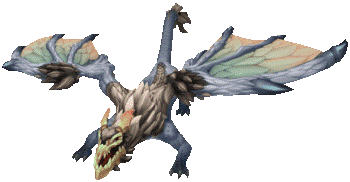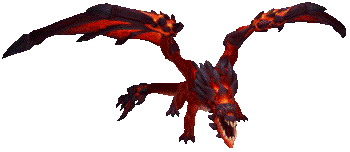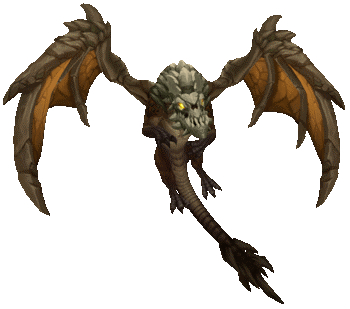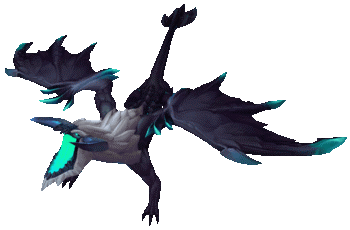how to add dragon souls
Standing guard in the bottom river, League of Legends' Dragons are intimidating from the moment they enter the Rift. Coming in four different elements plus the Elder Dragon, these varied epic monsters provide powerful buffs when slain. But there's a lot to remember in any game of League: When do they spawn? What kind of buffs do they provide? How can you best fight them? This guide will go through the ins-and-outs of Dragons in League of Legends to help you better understand what they are and how you can include the randomness they introduce to the game into your strategy.
The Basics: The When and What of Dragon Slaying
Starting off small, let's talk about the timeline of Dragon slaying. The first Elemental Drake will hit the Rift at five minutes into the game. What type of Drake spawns between Cloud, Infernal, Mountain, and Ocean is entirely random for the first Dragon, but it becomes increasingly less random after that. For example, after the first Dragon is slain, the next Dragon enters the scene five minutes later and must be a different element than the first Dragon. After two Dragons are slain, things get a little different, but this five minute respawn time stays the same throughout the game.
After the second Drake spawned onto the rift is slain, a different element from the first two is chosen and every Dragon after that will match it. The chosen element will also change the map itself, altering terrain and creating plants in new areas. This is where the race begins: the first team to slay four Dragons claims the Elemental Soul, an enhancement which builds upon the individual smaller buffs that slaying each Dragon grants. As might be intuitive from this, the maximum number of Elemental Drakes that could spawn in any given game is seven. Of course, this could only occur if one team slays three Dragons and the other four, but it is still within the realm of possibility.
Six minutes after an Elemental Dragon Soul is claimed, the Elder Dragon will spawn onto the rift, and it will respawn every six minutes after it is slain. This Dragon offers a buff more powerful than any of the elemental buffs or the Soul enhancement, making it a potent tool for ending the game.
Knowing the basics can only get you so far though. All of this is to say nothing of what buff each Dragon grants, how they change the rift, and how their Soul affects your team. Let's take a deep dive into each Elemental Drake and the Elder Dragon to get a better understanding of the buffs that they provide.
It's Elementary: An Examination of Each Elemental Drake
Cloud Drake: Soaring Into Fights and Across the Map

Buff: For each Cloud Drake your team slays, you will receive 10 ability haste for your ultimate.
Soul: Cloud Soul gives your champion 10% bonus movement speed overall, along with providing 50% bonus movement speed for 5 seconds after your use your ultimate.
Rift: The Cloud Rift features circular zones around each Red and Blue buff which provide 20% bonus movement speed when within them, and 35% bonus movement speed when not in-combat with an enemy champion. The Dragon Pit also gains a movement-speed enhancing zone.
Attacking Style: The Cloud Dragon moves and attacks the fastest out of any type of Dragon, but only damages a single target with each attack.
Notes and Advice: The Cloud Drake speeds up the game drastically for both teams. If your team is slaying Cloud Drakes, you'll be able to use game-changing ultimates more often and thus be able to start high-impact fights more frequently. The fact that the rift changes to create movement-speed boosting zones only builds upon this, as both teams are able to rotate, retreat, and generally maneuver the map more quickly.
In terms of fighting the Cloud Drake, it is important to respect its high single-target damage. Early in the game and without any lifesteal, this Drake would likely prove to be difficult to slay alone. Thus, getting the help of your team is crucial for slaying Cloud Drakes early in the game. However, because the Cloud Drake offers ability haste on ultimates, its power lies much more heavily in the mid and late game.
Infernal Drake: Turning Up the Heat and Igniting Fights

Buff: Each Infernal Drake slain grants your team a 4% bonus to both attack damage and ability power.
Soul: When your team has the Infernal Soul, your first damaging attack or ability every three seconds creates an explosion around its target, dealing adaptive damage to the target and nearby enemies.
Rift: The Infernal Rift is much more open than any other variation of Summoner's Rift, with the Red and Blue Buff pits being more-or-less destroyed, including the bushes near them. More Blast Cones spawn throughout the jungle, making maneuvering the tight spaces within it even easier. The entrance to the Dragon Pit also gets wider, making entering and exiting it easier for both teams.
Attacking Style: The Infernal Drake's attacks deal damage in an area, but it is otherwise middling among Elemental Dragons.
Notes and Advice: This Dragon's buff is perhaps the most universally useful, as more damage is never a bad thing. The opening up of the Rift via Blast Cones and terrain destruction adds to the potency of this increased damage, as there is less terrain which could prevent engages and enable disengages.
In terms of fighting the Infernal Drake, it deals about the same damage as a Cloud Dragon but in larger bursts, especially against teams that are grouped up when fighting it. As a result, it is necessary for whoever has the attention of the Dragon to move away from their allies so that the Infernal Dragon is not dealing the optimal amount of damage that it can do.
Mountain Drake: Solid Defenses and Rocky Terrain

Buff: Slaying a Mountain Drake grants your team a 6% increase to each champion's armor and magic resistance.
Soul: When your champion is buffed by the Mountain Drake Soul and has not taken damage for 5 seconds, they gain a shield.
Rift: The Mountain Rift adds terrain rather than destroying it, altering the jungle to have an additional pillar in each quadrant. The Dragon Pit also gains a small wall outside of its entrance which blocks vision.
Attacking Style: The Mountain Drake attacks the slowest out of any Elemental Drake, but it deals damage in an area and also deals the most damage per attack. It also has the highest armour and magic resistance of any Dragon.
Notes and Advice: Mountain Drake provides a buff which is the most situational of any on this list. Since the resistances are scaling rather than flat, they only provide optimal returns on champions who are building a lot of armor and magic resist. Given that teams frequently have more damage-oriented champions than tanks, the Mountain Drake's buff will often not be used to its fullest potential.
When fighting the Mountain Dragon, be very careful of its high AOE damage. Early into the game, champions without a lot of armour could find themselves dying in only a handful of attacks, and champions without a lot of damage won't be able to fight against its high resistances. Bringing your team to kill this Dragon will cover these factors effectively.
Ocean Drake: Quenching Thirsts and Making It Rain

Buff: Slaying an Ocean Drake grants your champion an additional 2.5% of their missing health restored to them every five seconds.
Soul: If your champion is being buffed by the Ocean Dragon Soul, you restore health over four seconds whenever you deal damage to enemies. This effect is reduced when dealing damage to minions or monsters.
Rift: The Ocean Rift creates a bunch of new flora throughout the rift, growing Honeyfruit near the buffs and creating pools of water in the buff pits. New bushes also emerge throughout the jungle, particularly near the Dragon Pit.
Attacking Style: The Ocean Dragon attacks with the same speed and damage as the Infernal Dragon, but slows instead of applying damage in an area.
Notes and Advice: The Ocean Drake provides a deceptively useful buff, especially in the early game. The additional healing makes taking trades and rotating around the map more effective, as you will eventually just out-regenerate the enemy. If your team claims the Soul, this regeneration can make all the difference between winning and losing fights. While it might not be the flashiest Dragon, it is incredibly useful.
Much of the same advice as before applies to fighting the Ocean Drake, however it is important to remember that this Dragon's attacks slow their targets. This means that if an enemy approaches while you are slaying this monster, it will be considerably harder to flee. However, the same idea applies in reverse if the enemy is attempting to kill the Dragon, so this Drake offers interesting engage opportunities.
Respect Your Elders: Elder Dragon and the Buff It Provides

The Elder Dragon is much different from its elemental brethren; it is not only significantly stronger, but its buff is also distinctly more powerful. To relativize its strength, it attacks with as much power as the Mountain Drake and has greater resistances, moves as quickly as the Cloud Drake, attacks as quickly as the Infernal and Ocean Drakes, and regenerates 250 health per second. In short, at its weakest it is as strong as the other Dragons, and at its strongest it is noticeably stronger.
Given this additional strength, it is only fitting that the buff it provides is much stronger. When a champion with the 'Aspect of the Dragon' deals damage, their damage against enemies burns them for up to 225 true damage over a period of just over two seconds. Furthermore, if a champion with this buff strikes an enemy champion who is below 20% of their maximum health, they execute them through any shields that they might have. While temporary, this buff is strong enough to carry a team through a teamfight on its own, and it without-a-doubt allows a team to win the game.
Concluding Thoughts
To finish off, let's talk about how you can actually use this information in game. Knowing Drakes and what types of buffs they provide can drastically affect your decision making, as some Dragons are good to prioritize slaying and some are not. For example, if you're playing against a team composition with a lot of tanks, ensuring that they don't get a Mountain Dragon is paramount to winning the game. Alternatively, if you're playing with a team composition that wants to poke the enemy down and siege towers, seeing an Ocean Dragon should make you want to slay it as quickly as possible. This brings us to the main point of this article: adapting to change is important. Dragons are one of the largest instances of randomness and chance in League of Legends, so you can't just give up every time you see that the Drakes are spawning against your preference. Instead, learning how to adapt your macro-strategy to the evolving state of the rift is crucial to winning games strategically rather than just mechanically dominating the enemy team. By being adaptable in your strategy, destroying the enemy nexus should be much easier than slaying a Dragon.
how to add dragon souls
Source: https://dignitas.gg/articles/blogs/Unknown/14933/here-be-dragons-a-guide-to-dragons-and-souls-in-league-of-legends
Posted by: venturathereappos.blogspot.com

0 Response to "how to add dragon souls"
Post a Comment